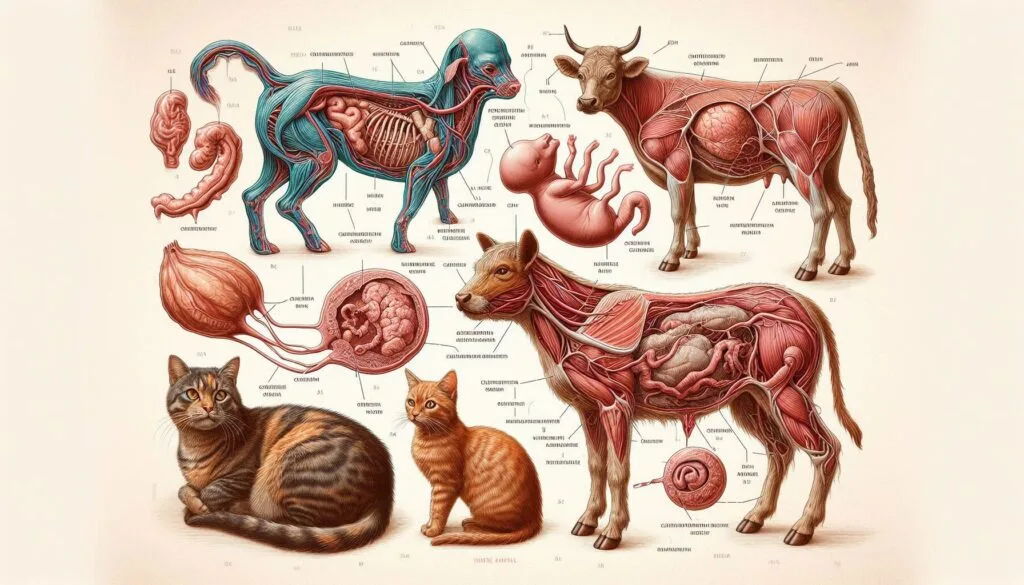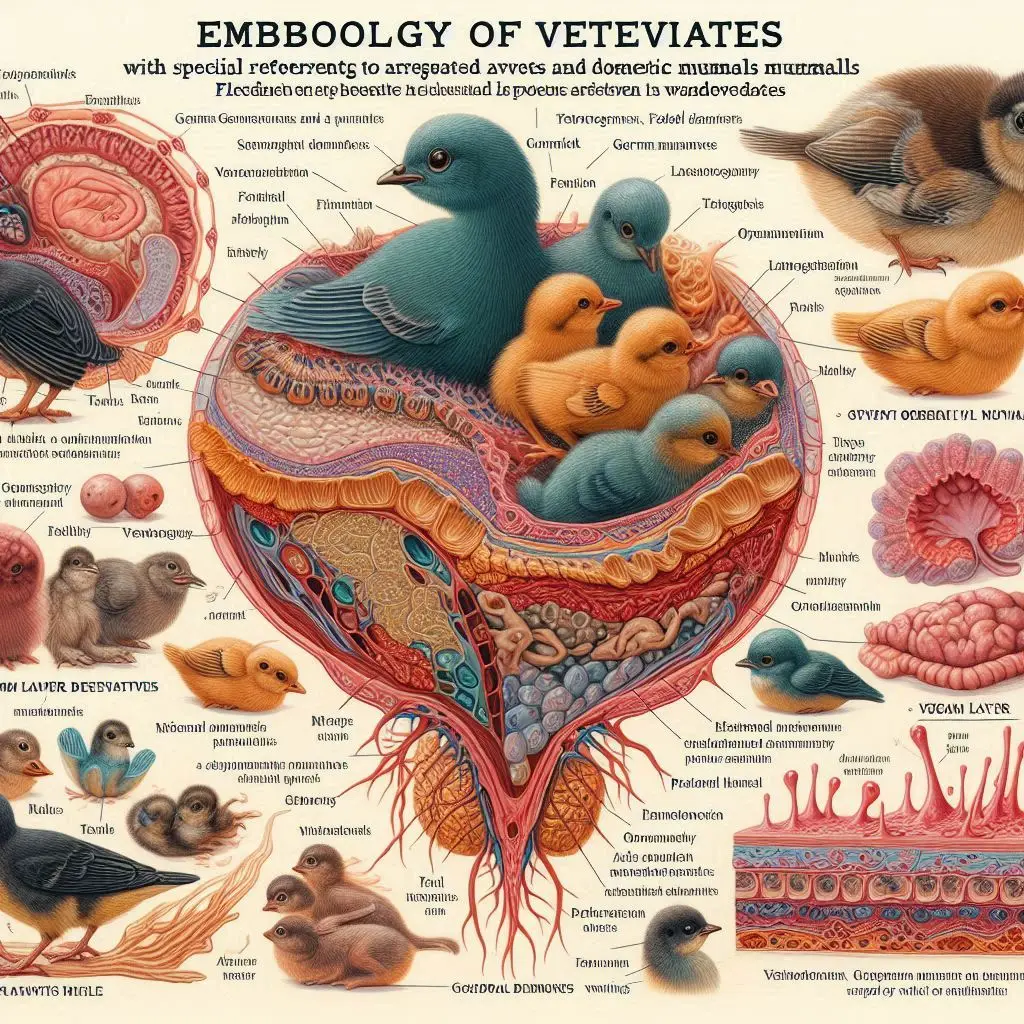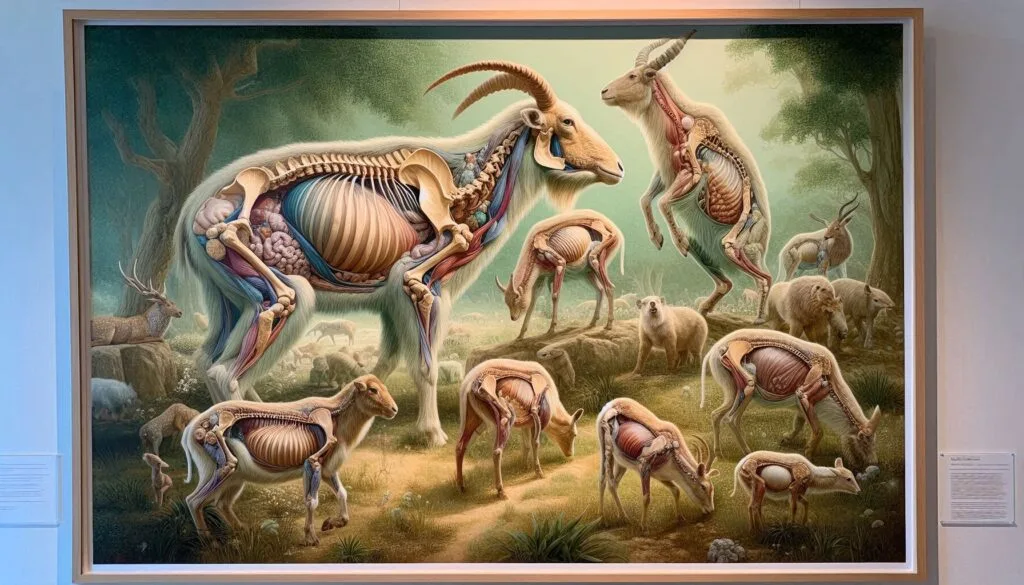Deciduate Placentation

Introduction to Placentation
Placentation is a critical aspect of reproduction in mammals. It involves the formation of the placenta, an organ that connects the developing fetus to the uterine wall. This connection allows for nutrient and gas exchange between mother and fetus. There are different types of placentation, with deciduate placentation being one of the most intriguing forms.
In this article, we will explore deciduate placentation in domestic animals. We will discuss its characteristics, compare it with non-deciduate placentation, and examine its implications for animal health and reproduction.
What is Deciduate Placentation?
Deciduate placentation refers to a type of placenta where a significant portion of maternal tissue is shed during childbirth. This process occurs when the placenta detaches from the uterine wall. As a result, some maternal tissue is lost along with the placenta. This type of placentation is common in several domestic animals.
Key Characteristics of Deciduate Placentation
- Deep Attachment: The chorionic villi (tiny finger-like projections) penetrate deeply into the uterine lining. This deep attachment facilitates efficient nutrient transfer but also means more maternal tissue is lost during birth.
- Maternal Tissue Loss: When the placenta separates from the uterus during parturition, it takes with it a significant amount of maternal tissue. This can lead to complications such as hemorrhage.
- Types of Animals: Deciduate placentation is primarily observed in:
- Dogs (Canis lupus familiaris)
- Cats (Felis catus)
- Some rodents (e.g., rats and mice)
For more detailed information on mammalian reproduction, you can check out this article on mammalian reproductive systems.
Comparison with Non-Deciduate Placentation
Non-deciduate placentation does not involve significant maternal tissue loss during childbirth. Understanding the differences between these two types can help clarify their implications for animal health.
Types of Non-Deciduate Placentation
- Cotyledonary Placenta: Found in ruminants like cows and sheep, this type features distinct projections called cotyledons that attach to specific areas on the uterine wall.
- Diffuse Placenta: Seen in species like horses and pigs, where chorionic villi are spread over a large area of the placenta.
- Zonary Placenta: Common in carnivores, characterized by a band-like area of attachment around the middle of the chorion.
Implications for Animal Health
The type of placentation can significantly affect maternal health during and after delivery:
- Deciduate Placenta: Increased risk of hemorrhage due to tissue loss can complicate recovery.
- Non-Deciduate Placenta: Generally safer delivery process with less risk to maternal health.
For more insights on reproductive health in animals, visit Animal Reproduction Science.
The Process of Deciduate Placentation
Understanding how deciduate placentation works provides valuable insights into its implications for domestic animals.
Formation of the Placenta
- Implantation: After fertilization, the embryo travels to the uterus and implants itself into the uterine lining.
- Development: The placenta develops alongside the fetus, forming connections that allow nutrient exchange.
- Detachment During Birth: As labor begins, hormonal changes trigger contractions that help detach the placenta from the uterine wall.
Challenges During Parturition
The shedding of maternal tissue during parturition can lead to several challenges:
- Hemorrhage: Significant blood loss may occur if blood vessels are torn during detachment.
- Infection Risk: The open wound left by the detached placenta can become infected if not managed properly.
For more information on parturition processes in animals, refer to this research article on reproductive physiology.
Advantages and Disadvantages of Deciduate Placentation
Like any biological system, deciduate placentation has its pros and cons.
Advantages
- Efficient Nutrient Transfer: The deep attachment allows for effective transfer of nutrients from mother to fetus.
- Support for Fetal Development: The close association with maternal tissues supports proper fetal growth.
Disadvantages
- Increased Risk During Birth: The potential for hemorrhage poses risks during delivery.
- Postpartum Complications: Maternal recovery may be complicated by tissue loss and potential infection.
Conclusion
Deciduate placentation plays a vital role in reproduction among certain domestic animals like dogs and cats. While it offers advantages such as efficient nutrient transfer, it also poses risks during childbirth due to maternal tissue loss.
Understanding these dynamics helps veterinarians and animal caretakers manage reproductive health effectively. By recognizing both the benefits and challenges associated with deciduate placentation, we can ensure better outcomes for both mothers and their offspring.
For further reading on this topic and related subjects, consider visiting The Journal of Reproduction and Fertility.
More from Veterinary Anatomy:
Skin of Farm Animals






Responses